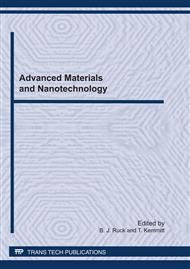p.166
p.170
p.174
p.178
p.182
p.188
p.195
p.199
p.203
High-Throughput Microfluidic Sorting of C. elegans for Automated Force Pattern Measurement
Abstract:
With a reduced set of 300 neurons and a fully sequenced genome, the multicellular nematode Caenorhabditis elegans has recently gained increasing interest as a model organism for neurobiological studies. One particular area of interest is related to worm locomotion and the investigation of the correlation between individual genes, neurons, muscle arms and the motion pattern of the nematodes. To characterize motion patterns of moving C. elegans we have previously demonstrated an automated force measurement setup using microfabricated polydimethylsiloxane (PDMS) pillars and image processing. In this paper we introduce an integrated microfluidic device for worm sorting and force measurement. The device allows for high-throughput measurements by combining sorting functions on-chip with the existing force pattern measurement system. A horizontal sorting channel and branching vertical pillar array channels are utilized for worm sorting. Using the former, the nematodes can be flow-directed into arrays of 40 µm and 60 µm diameter pillars based on worm size and type. This improves animal survival and increases the relevance of the force measurement by allowing one to match the amplitude of the worm movement to the pillar spacing. The PDMS based device consists of three layers: a fluidic layer with pillars for force measurement at the bottom, a gas layer on top and a thin PDMS layer sandwiched between them. By applying pressure to the gas layer, the membrane in the middle will be deflected thus restricting the worms’ movement in the fluidic channel.
Info:
Periodical:
Pages:
182-187
Citation:
Online since:
September 2011
Authors:
Keywords:
Price:
Сopyright:
© 2012 Trans Tech Publications Ltd. All Rights Reserved
Share:
Citation:


